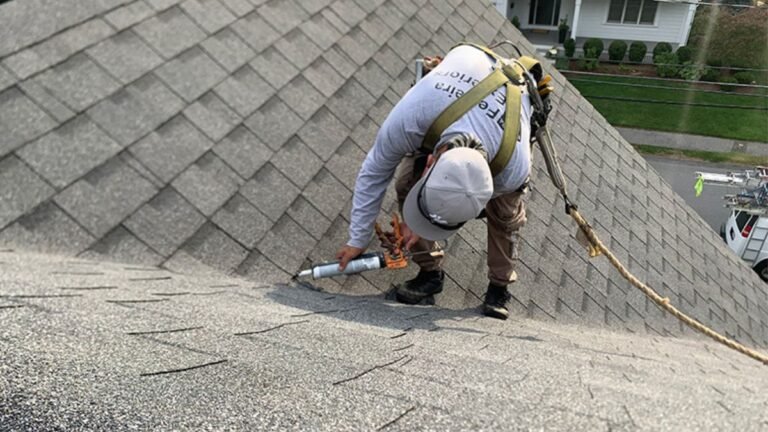A strong, well-maintained roof is essential for protecting your home from harsh weather, leaks, and structural damage. Fladderak roof management ensures your roof stays in top shape, preventing costly repairs and extending its lifespan. In this guide, we’ll explore why roof management matters, how often you should check your roof, common issues, and the best materials for durability. Whether you own a home or manage properties, proper roof maintenance saves money and enhances safety.
Why Is Fladderak Roof Management Important?
Your roof is your home’s first line of defense against rain, snow, wind, and extreme temperatures. Without regular inspections and maintenance, minor issues can turn into major, costly repairs. Fladderak roof management focuses on preventive care, ensuring your roof lasts for decades without expensive replacements. Here’s why roof management is crucial:
- Prevents leaks and water damage – Small leaks can lead to mold, rot, and costly structural damage.
- Enhances energy efficiency – A well-maintained roof keeps your home insulated, reducing heating and cooling costs.
- Boosts property value – A strong, well-kept roof improves your home’s resale value.
- Increases lifespan – Regular maintenance extends your roof’s durability, preventing premature replacement.
By taking proactive steps, you can avoid unexpected roofing problems and save money in the long run.
How Often Should You Check Your Roof?
Regular roof inspections are essential to catch potential issues early. Experts recommend checking your roof at least twice a year—once in the spring and again in the fall. Seasonal inspections help identify damage caused by winter snow or summer storms.
Additionally, inspect your roof after severe weather events, such as heavy rain, hailstorms, or strong winds. Even minor damage, like missing shingles or small cracks, can worsen over time if left unchecked.
If you’re unsure about your roof’s condition, hiring a professional for an annual inspection is a smart investment.
Signs Your Roof Needs Repair
Your roof may look fine from the ground, but hidden issues could be developing. Watch for these warning signs that indicate your roof needs repairs:

Best Time for Roof Inspections
The ideal times for roof inspections are spring and fall, when weather conditions are mild. Checking your roof in spring helps you spot any winter damage, while a fall inspection ensures your roof is prepared for the colder months ahead.
What Happens If You Ignore Roof Problems?
Neglecting roof maintenance can lead to serious consequences, including:
- Water leaks – A small leak can lead to mold growth, rotting wood, and expensive interior damage.
- Structural damage – Long-term neglect can weaken your home’s foundation, walls, and ceilings.
- Pest infestations – Gaps in the roof can allow insects and rodents to enter your home.
- Higher energy bills – Poor insulation due to roof damage increases heating and cooling costs.
Easy Steps to Take Care of Your Roof
Taking care of your roof doesn’t have to be complicated. Here are some easy maintenance steps:
- Keep gutters clean – Clogged gutters cause water buildup, leading to leaks and roof damage.
- Check for missing or damaged shingles – Replace them immediately to prevent water infiltration.
- Trim overhanging tree branches – Branches can fall during storms, damaging your roof.
- Look for mold or moss growth – This can indicate trapped moisture, which weakens roofing materials.
- Schedule professional inspections – A trained roofer can identify hidden problems before they worsen.
Common Roof Problems & How to Fix Them
Roofs face wear and tear over time, especially due to extreme weather conditions. Here are some of the most common roofing issues and their solutions:
- Leaky roof – Fix by sealing cracks, replacing damaged shingles, or repairing flashing around chimneys and vents.
- Sagging roof – This could indicate structural weakness. Reinforce or replace the affected areas.
- Clogged gutters – Regularly clean gutters to prevent water backup and leaks.
- Cracked or missing shingles – Replace individual shingles to prevent further damage.
- Moss or algae growth – Use a mild bleach solution to remove and prevent regrowth.
Taking swift action when you notice these problems can help avoid costly repairs.
Best Materials for a Long-Lasting Roof
Choosing the right roofing material is crucial for durability, weather resistance, and longevity. The best materials for long-lasting roofs include:
- Asphalt shingles – Affordable, easy to install, and widely used in the U.S.
- Metal roofs – Extremely durable, fire-resistant, and energy-efficient.
- Tile roofs – Aesthetic appeal with long-lasting performance, especially in warm climates.
- Slate roofs – Expensive but highly durable, lasting over 100 years.
- Wood shingles – Classic look but requires regular maintenance to prevent rot.
Each material has its pros and cons, so choosing the best option depends on climate, budget, and maintenance requirements.
Asphalt Shingles – A Popular Choice
Asphalt shingles are the most common roofing material in the U.S., and for good reason. They offer:

- Affordability – Asphalt shingles are budget-friendly compared to other materials.
- Easy installation – Roofing contractors can install them quickly.
- Weather resistance – High-quality asphalt shingles withstand harsh weather.
- Variety of styles – Available in different colors and textures to match your home.
For homeowners looking for a balance between cost and durability, asphalt shingles are an excellent choice.
Metal Roofs – Strong & Durable
Metal roofing is a great investment for homeowners looking for durability and energy efficiency. Benefits of metal roofs include:
- Longevity – Lasts 40–70 years with minimal maintenance.
- Fire-resistant – Protects your home from potential fire hazards.
- Energy-efficient – Reflects sunlight, reducing cooling costs.
- Withstands extreme weather – Ideal for areas prone to hurricanes or heavy snowfall.
Tile Roofs – Beautiful & Long-Lasting
Tile roofs, made from clay or concrete, are known for their beauty and longevity. Advantages include:
- Aesthetic appeal – Adds a unique, upscale look to homes.
- Weather resistance – Withstands high winds, heavy rain, and extreme heat.
- Durability – Can last over 50 years with proper maintenance.
However, tile roofs can be heavy, so proper structural support is necessary.
Thoughts: Protect Your Roof & Save Money
Investing in Fladderak roof management is one of the smartest decisions for homeowners. Regular inspections, timely repairs, and using high-quality materials can prevent costly damages and extend your roof’s lifespan. A well-maintained roof not only protects your home but also enhances its value and energy efficiency.
The Bottom Line
Your roof is one of the most important parts of your home, and taking care of it should be a priority. By following a maintenance plan, checking for damage regularly, and choosing the best materials, you can ensure your roof remains strong for years. Fladderak roof management is not just about fixing problems—it’s about preventing them before they start. A little care today can save you thousands in repairs tomorrow. Keep your roof in top condition, and enjoy a safe, comfortable home!


